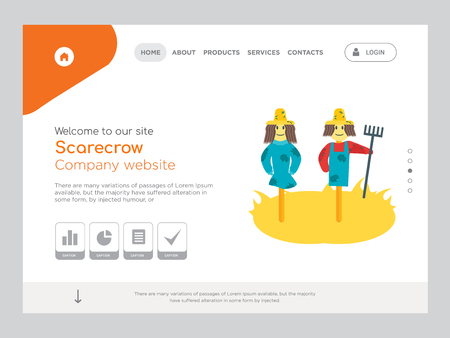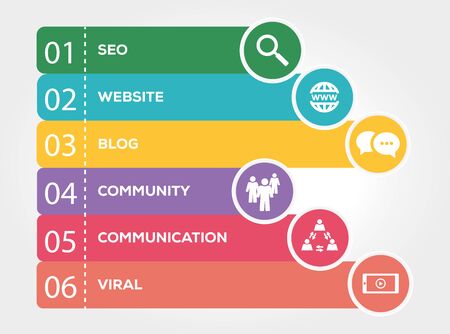1. Understanding Link Relevance and Context
When it comes to SEO, backlinks are a big deal. But not all backlinks are created equal. Two key factors that separate high-quality links from the rest are link relevance and contextuality. These terms might sound technical, but understanding them is essential if you want to build a strong SEO foundation for your website.
What Is Link Relevance?
Link relevance refers to how closely related the content of the linking page is to the content of your own site or page. In simple terms, if a cooking blog links to your recipe website, that’s a relevant link. But if the same blog links to a car repair site, that link lacks relevance—and search engines notice.
Why Does It Matter?
Search engines like Google look at link relevance as a way to determine how trustworthy and authoritative your site is in its niche. A relevant backlink signals that others in your industry see value in your content.
Understanding Contextuality
Contextuality takes things a step further. Its not just about whether the sites are related—its about where and how the link appears within the content. A backlink placed naturally within a paragraph carries more weight than one stuck in a footer or sidebar.
The Power of Placement
| Link Placement | SEO Value | Reason |
|---|---|---|
| In-content (within paragraphs) | High | Naturally fits into the topic being discussed |
| Sidebar/Footer | Low | Often seen as less editorial or automated links |
| Author Bio Section | Medium | Somewhat relevant but not directly part of the article body |
Why These Factors Are More Than Just Buzzwords Today
Years ago, any backlink could boost your rankings—even if it came from an unrelated or spammy source. But today, search engines are smarter. Googles algorithms now prioritize quality over quantity. That means a few relevant, contextual backlinks can outperform dozens of irrelevant ones.
The Bottom Line?
If youre trying to improve your sites visibility on search engines, focus on earning backlinks that make sense within their context and come from websites that share your niche or industry. That’s what makes link relevance and contextuality true pillars of backlink quality.
2. Why Relevance Is More Valuable Than Quantity
When it comes to backlinks, more doesn’t always mean better. Google’s algorithm has evolved to prioritize quality over quantity — and one of the key indicators of quality is relevance. A few backlinks from websites that are closely related to your niche can have a much stronger impact on your rankings than hundreds of random or low-quality links.
Understanding Link Relevance
Link relevance means that the content on the page linking to you is topically related to your own content. For example, if you run a fitness blog, a backlink from a health magazine or a workout gear website is much more valuable than one from an unrelated site like a travel blog.
How Google Views Relevant Links
Google uses context to determine how useful a link is. If your backlink appears naturally within content that shares a similar topic or theme, it sends a strong signal to Google that your content is trustworthy and authoritative in that space.
The Power of Fewer, More Relevant Links
Let’s break down how high-relevance links compare with low-quality or unrelated ones:
| Type of Link | Source Example | Impact on SEO | Trust Signal to Google |
|---|---|---|---|
| Highly Relevant Link | A well-known marketing blog linking to your SEO article | High Positive Impact | Strong – Seen as expert endorsement |
| Low-Relevance Link | A pet care forum linking to your tech review site | Minimal or No Impact | Weak – May appear unnatural or spammy |
| Irrelevant Mass Backlinks | Hundreds of links from unrelated directories or low-quality blogs | Potentially Harmful (Spam Signals) | Poor – Could hurt rankings if flagged by algorithms |
Context Matters Just as Much as Relevance
Even within relevant topics, contextual placement of the link matters too. A link placed naturally within the body of an article carries more weight than one buried in a footer or sidebar. Google looks at surrounding text and user experience signals when assessing link value.
The Bottom Line: Quality Wins Every Time
If youre focusing on building backlinks, aim for those that come from websites in your industry and are included within meaningful content. In today’s SEO landscape, five great contextual links can easily outperform 500 irrelevant ones — because it’s not about how many links you have; it’s about how much they matter.

3. The Role of Content Context in Passing Link Equity
When it comes to backlinks, not all links are created equal. One of the most important — yet often overlooked — factors that impacts a backlinks SEO value is the context in which it appears. In simple terms, context refers to the surrounding content that gives a backlink its meaning and relevance. If a backlink is embedded naturally within relevant and high-quality content, it can pass more link equity (or “SEO juice”) than one that’s randomly inserted or surrounded by unrelated text.
Why Context Matters for SEO
Search engines like Google have become much smarter at understanding the relationship between content and links. They look at the words around a link to figure out if it makes sense and is helpful to users. A well-placed link inside a relevant paragraph on a reputable site sends strong signals that the linked page is trustworthy and useful.
Good vs. Bad Context Examples
Let’s take a look at two examples from real U.S.-based websites:
| Scenario | Example Website | Description | SEO Impact |
|---|---|---|---|
| Good Context | Healthline.com | A backlink to a fitness gear review page is included in an article titled “Top 10 Tips for Home Workouts,” with surrounding text discussing recommended equipment. | High – Relevant content, natural placement, trusted domain. |
| Poor Context | Generic blog or forum | A backlink to the same fitness gear review page appears in a post about cooking recipes, with no connection to exercise or fitness. | Low – Irrelevant content, forced placement, confusing for users and search engines. |
The Power of Semantic Relevance
Contextual links that share semantic relevance with their host content tend to perform better in search rankings. For example, if your website sells eco-friendly cleaning products, getting a backlink from a U.S.-based sustainability blog like Treehugger.com within an article about non-toxic household solutions is far more valuable than getting linked from an unrelated tech news article.
Helpful Tip:
If youre building backlinks or guest posting, always aim to insert your links into paragraphs where the topic closely aligns with your own content. This not only improves SEO but also boosts click-through rates since users are more likely to be interested in related material.
Anchor Text Also Plays a Role
The anchor text — the clickable part of the link — should also reflect the context. For example:
| Anchor Text | Context Relevance |
|---|---|
| “best eco-friendly cleaners” | High – Matches target keywords and fits article topic on green living. |
| “click here” | Low – Generic and doesn’t provide keyword signals or contextual clarity. |
Bottom Line: Keep It Natural and Relevant
If you want your backlinks to actually help your SEO efforts, focus on earning links that fit naturally within relevant, high-quality content. Googles algorithms reward this kind of authenticity because its also what users find helpful. So remember — when it comes to backlinks, where and how they appear can make all the difference.
4. Google’s Evolving Algorithms and Contextual Link Signals
As Google continues to refine its search algorithms, the importance of link relevance and contextuality has grown significantly. Gone are the days when simply having a high number of backlinks was enough to boost your website’s ranking. Today, its all about how well those links fit within the context of the content — both on your site and the referring site.
Understanding Googles Focus on Helpful Content
With updates like Googles Helpful Content Update, the search engine now places greater emphasis on user-focused content. This means Google evaluates not just the presence of links but how helpful and contextually relevant those links are to the user experience. For example, a link from a tech blog to a software company makes more sense than one from an unrelated cooking website.
What Makes a Link Contextually Relevant?
Contextual link signals are cues that help Google understand how a backlink fits naturally within the content. These include:
- Topical relevance: Is the linking page about a related subject?
- Anchor text usage: Does the anchor text accurately describe what it’s linking to?
- Placement in content: Is the link embedded naturally within body text rather than in footers or sidebars?
Impact of Algorithm Updates on Link Evaluation
The table below shows how recent algorithm updates have shifted focus toward evaluating links based on quality, relevance, and context:
| Google Update | Main Focus | Impact on Links |
|---|---|---|
| Panda | Content quality | Low-quality sites with spammy backlinks were penalized |
| Penguin | Backlink quality | Penalized unnatural or manipulative link profiles |
| BERT | Natural language understanding | Improved understanding of context around links |
| Helpful Content Update | User-first content | Puts emphasis on links that provide real value and fit naturally in useful content |
Why This Matters for Your SEO Strategy
If youre building backlinks today, you need to think beyond domain authority. Ask yourself: Does this link make sense in context? Would a real reader find it useful? That’s what Google is looking for — not just signals that suggest popularity, but indicators that your content genuinely serves users and is supported by relevant, trustworthy sources.
5. Best Practices for Building Relevant and Contextual Backlinks
When it comes to boosting your SEO in the U.S. market, not all backlinks are created equal. The most effective links come from relevant sources and are placed within meaningful, contextual content. Below are some practical strategies you can use to earn high-quality backlinks by focusing on content partnerships, thought leadership, and localized outreach.
Content Partnerships with Industry-Relevant Sites
Partnering with websites that align with your niche is a powerful way to get relevant backlinks. Look for blogs, news outlets, or community sites that share your target audience. Offer to contribute valuable content or collaborate on joint resources like ebooks or industry reports.
Examples of Effective Content Partnerships:
| Type of Partner | Content Format | Link Opportunity |
|---|---|---|
| Industry Blogs | Guest Posts | Author bio or in-text citation |
| Trade Associations | Guides/Whitepapers | Resource linkbacks |
| Educational Institutions | Case Studies/Research | .edu backlinks from research mentions |
Establishing Thought Leadership
Becoming a recognized expert in your field naturally attracts backlinks. Share insights through interviews, podcasts, webinars, and social media. Reach out to journalists and bloggers as a go-to source for commentary on industry trends.
Ways to Build Thought Leadership:
- Create original research or data-driven content
- Syndicate expert opinions on platforms like Medium or LinkedIn
- Pitch guest appearances on niche podcasts and online events
Localized Outreach for U.S.-Based Audiences
If youre targeting customers in the U.S., local relevance matters. Connect with local bloggers, newspapers, event organizers, and chambers of commerce to build backlinks that resonate with regional audiences.
Tactics for Localized Link Building:
| Tactic | Description |
|---|---|
| Sponsor Community Events | Earn links from event pages or press releases hosted by local organizations. |
| Collaborate with Local Influencers | Partner with U.S.-based micro-influencers who blog about regional topics. |
| Add Business Listings | Create optimized profiles on local directories like Yelp, BBB, and Google Business Profile. |
The Key: Relevance + Context = Quality Links
No matter which strategy you choose, always prioritize relevance and context. A single link from a niche-relevant site within meaningful content is far more valuable than dozens of unrelated directory links. Focus on building relationships and creating helpful content that others genuinely want to reference—and the backlinks will follow.


